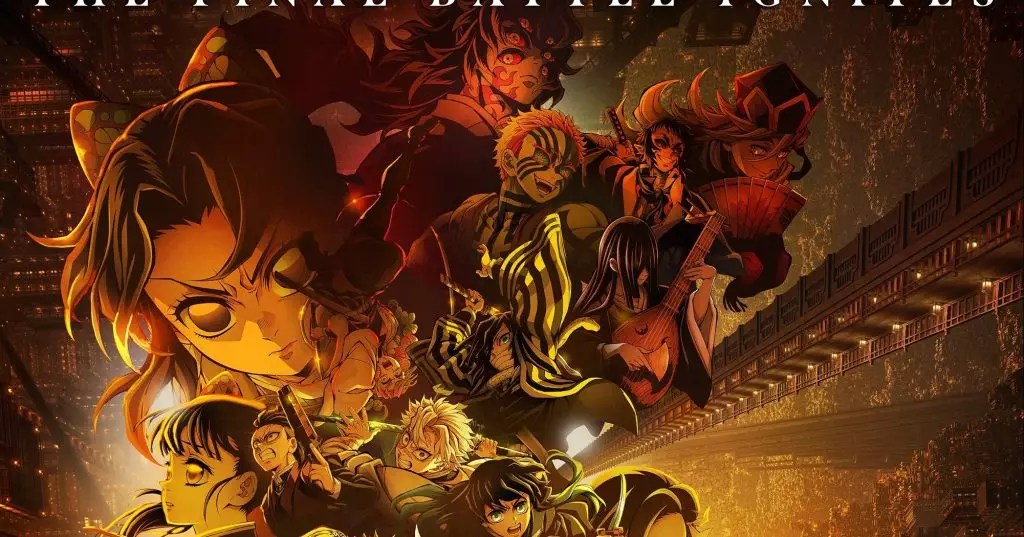Demon Slayer: Infinity Castle has taken Japan by storm, shattering box office records and establishing itself as a pivotal moment in anime cinema history. The staggering figures—an opening day gross exceeding 1.6 billion yen, over five million admissions within just three days, and an overall revenue surpassing 7.3 billion yen—are not merely numbers; they signify a cultural phenomenon that commands both admiration and scrutiny. The film’s extraordinary success underscores a broader trend: anime’s ascendancy from niche entertainment to mainstream cultural mainstay. However, behind this apparent triumph lies a subtle tension between commercial exploitation and genuine artistic growth, raising questions about the genre’s future trajectory and its societal impact.
Market Dominance and Commercial Ruthlessness
The staggering commercial success of Infinity Castle, especially its record-breaking Imax debut, reveals a market increasingly driven by spectacle and fan loyalty. Hollywood’s influence has long dominated global cinema, but here we see a form of cultural resilience—anime surpassing Hollywood blockbusters in domestic markets, leveraging deep-rooted fanbases. Critics might argue that this reflects a cultural shift, but a more critical view reveals an overwhelming commercial machinery that prioritizes record-breaking over artistry. The film’s ability to generate such revenue, especially on opening weekends, suggests an industry that recognizes the power of nostalgia and franchise-building more than artistic innovation. In essence, the anime industry is morphing into a finely-tuned commercial juggernaut that relies heavily on emotional investment and loyalty, risking a dilution of creative originality in favor of blockbuster numbers.
The International Dimension and Cultural Diplomacy
Sony and Crunchyroll’s international rollout of Infinity Castle reveals an ambition that extends beyond Japan’s borders. The decision to release the film globally signifies confidence in the franchise’s universal appeal but also raises concerns about cultural homogenization. It’s tempting to see this as a triumph of cultural export, but the reality is more complex. The global audience is increasingly exposed to Japanese cultural products that are carefully curated for mass consumption, often stripped of their local nuances. The Western entertainment industry already struggles with balancing authentic storytelling against international market demands, and anime’s global success risks accelerating this trend. Moreover, this expansion commodifies Japanese folklore and storytelling, transforming it into a global product designed to capitalize on emotional investment rather than cultural authenticity.
Artistic Merit Versus Commercial Strategy
The success of Infinity Castle highlights the challenge of distinguishing genuine artistic achievement from strategic commercial planning. Director Haruo Sotozaki’s work remains rooted in a narrative that appeals to fans familiar with the manga—a story of resilience, friendship, and heroism. Yet, market success often prioritizes franchise longevity and merchandise sales over narrative innovation. The anime industry, in its current form, appears to favor predictable formulas that guarantee box office dominance, rather than risking artistic experimentation. While this strategy yields impressive financial results, it prompts skepticism about the sustainability of artistic integrity. Does relentless pursuit of record-breaking figures constrain creativity, or can commercial success coexist with artistic growth? The answer’s complexity reveals itself as a hybrid of both, with enormous profits sometimes coming at the expense of narrative depth.
The Cultural and Societal Implications of an Anime Boom
The profound commercial success of Demon Slayer signifies more than an entertainment milestone; it signals a cultural shift that can influence societal values and perceptions. On one hand, anime like Infinity Castle promotes creativity, craftsmanship, and a shared cultural identity, reinforcing positive values of perseverance and heroism. On the other hand, the burgeoning obsession with record-breaking franchises risks fostering consumerism and superficial engagement, sidelining nuanced storytelling. Furthermore, the genre’s increased global prominence taps into a complex mix of cultural pride and commercial interest—sometimes at the expense of authentic cultural expression. While Japanese anime continues to thrive, its growing dominance invites a reflection on whether it is truly representing the depth of Japanese culture or merely packaging it for mass consumption.
Demon Slayer: Infinity Castle exemplifies a paradox—at once a marvel of commercial achievement and a cautionary tale about cultural overreach. Its record-breaking numbers deserve recognition but should also prompt critical reflection on what this success signifies for artistic integrity, cultural authenticity, and societal values. As anime continues its global conquest, the question remains: are we witnessing a genuine cultural renaissance or a carefully crafted spectacle manipulated for maximum profits? The answer lies in whether creators and consumers can balance financial success with a commitment to authentic, meaningful storytelling amid a rapidly commercializing global entertainment landscape.

